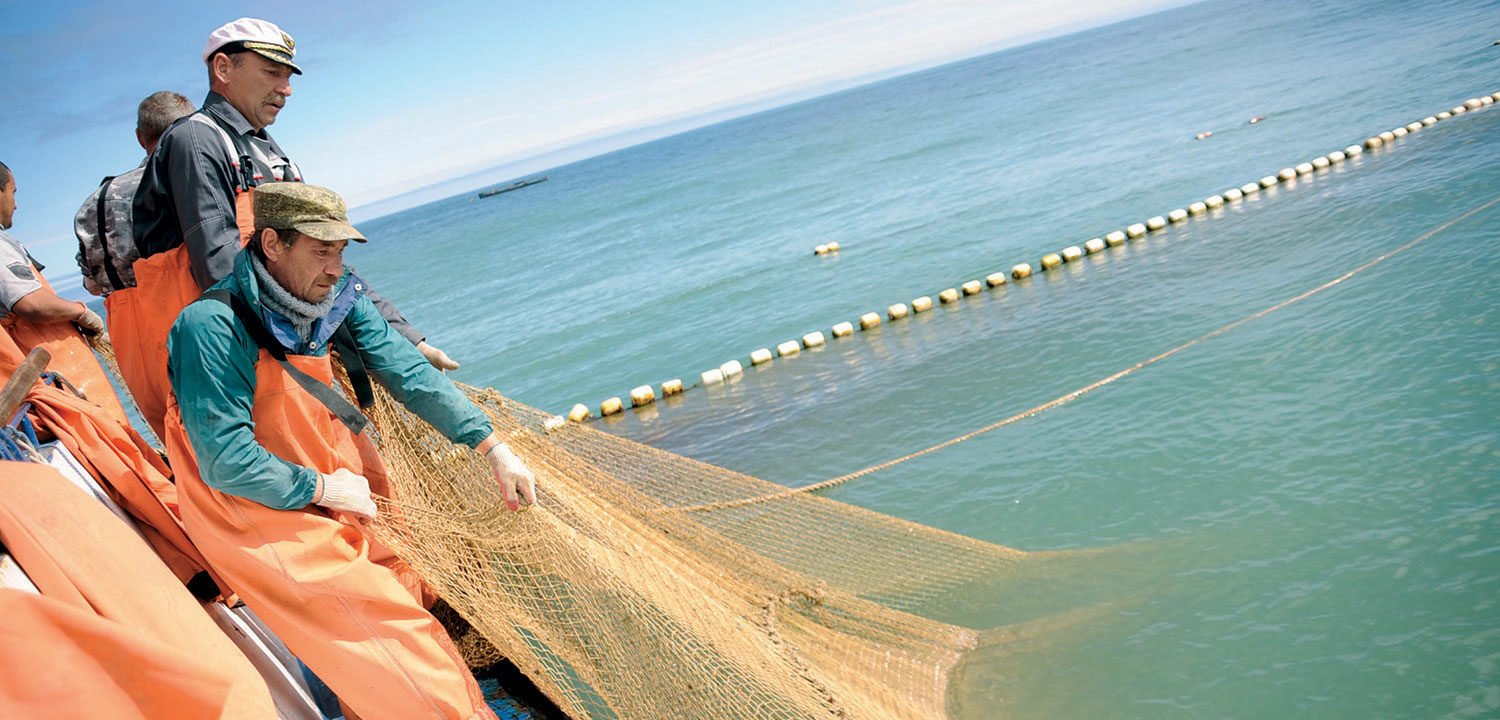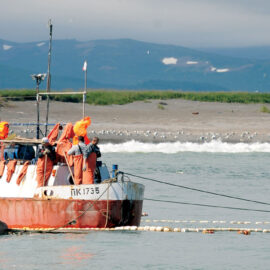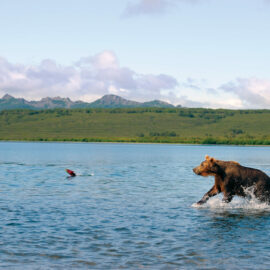Many of Kamchatka’s wild salmon fisheries in a FIP or MSC certification process.
Kamchatka Peninsula, Russian Federation – Local salmon fishermen on the Kamchatka Peninsula in Russia continue to make progress supporting the sustainability and long-term health of their fisheries. The Karaginsky Bay salmon fishery launched the first ever Fishery Improvement Project (FIP) in Eastern Kamchatka this week, bringing new sustainability targets to fisheries that produced over 22,000 tons of salmon in 2014. And in Western Kamchatka, the Western Kamchatka Regional Salmon FIP expanded to encompass four additional watersheds doubling the volumes of salmon under improved status. The Kamchatka Peninsula is a global center for salmon abundance and diversity; with these new developments nearly half of Kamchatka’s wild salmon fisheries are now in a FIP, Marine Stewardship Council (MSC) certified, or in a MSC certification assessment.
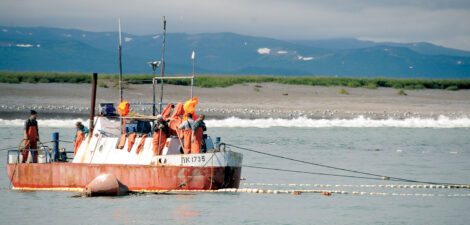
“We have a new generation of leaders coming up in Russian salmon fisheries,” said Igor Redkin, the General Director of Vityaz Avto, one of the already certified companies that is leading the expanded West Kamchatka salmon FIP. “Before people were living day by day, but now they are thinking about the future and that means understanding that protecting nature means protecting your business.”
The new FIPs are part of a larger trend of increased engagement of Russian salmon fisheries in sustainability and certification efforts. This is especially true in the Kamchatka Peninsula where efforts have been gaining momentum over the past decade as fishermen, government officials, and seafood businesses work to blend resource protection and development needs.
The Wild Salmon Center, in collaboration with WWF Russia, has supported a number of improvements as part of the FIP, including three straight years of independent observer programs. The new FIP fisheries will also explore setting revised escapement targets (to allow additional salmon to spawn), in addition to other measures to improve the long-term survival of the fishery.
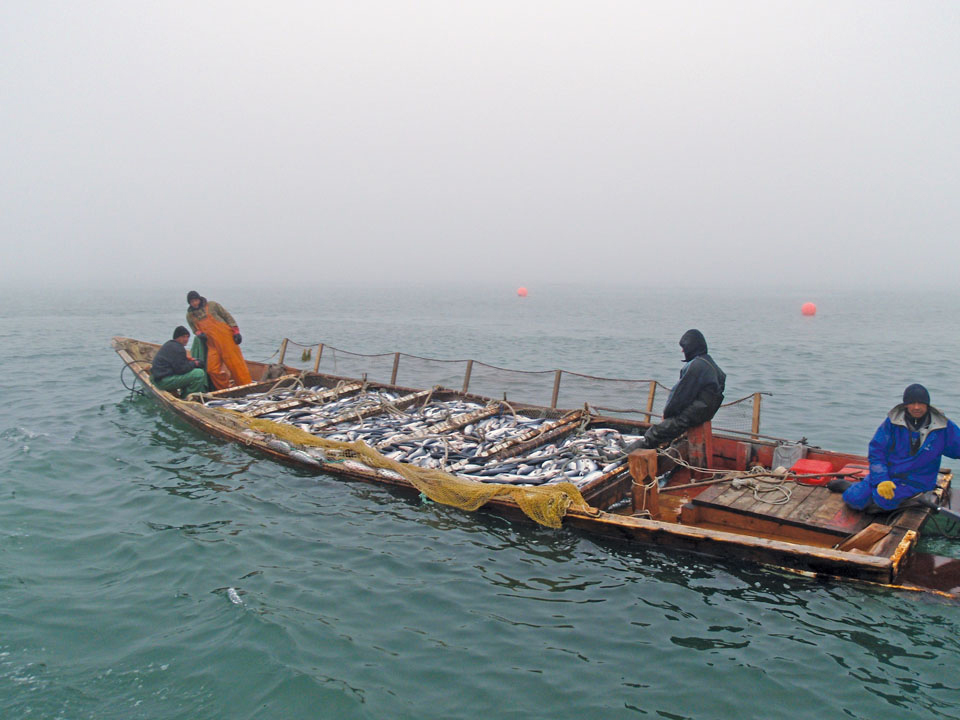
the MSC assessment process | © Wild Salmon Center
The new FIPs follow on the heels of other successful FIPs that led to MSC certifications, including the Ozernaya sockeye fishery in Kamchatka and the Northeast Sakhalin salmon fishery. Another large salmon FIP, the Narody Severa/Bolsheretsk fishery, is currently under a MSC full assessment that experts expect to be complete by the end of this year. With MSC certification, Russian salmon fisheries have gained access to high-end markets in the UK, Germany, the US and Canada, which is driving additional interest in certification and FIPs.
“Many fishermen in Kamchatka understand that you have to have sustainable management if you want a sustainable business,” says Brian Caouette, Program Director at Wild Salmon Center. “Sustainability takes persistence. It takes engagement with fishermen who care. That’s what these FIPs are all about, and that’s what will continue to make them successful.”
The Salmon FIP Partnership was launched in collaboration with leading seafood companies and salmon producers across the Pacific Rim with the goal of increasing the volume of sustainable or improving wild capture salmon to 75% of global production.
View the full FIP profiles online: Karaginsky Bay salmon FIP and Vityaz-Avto and Delta salmon FIP.
